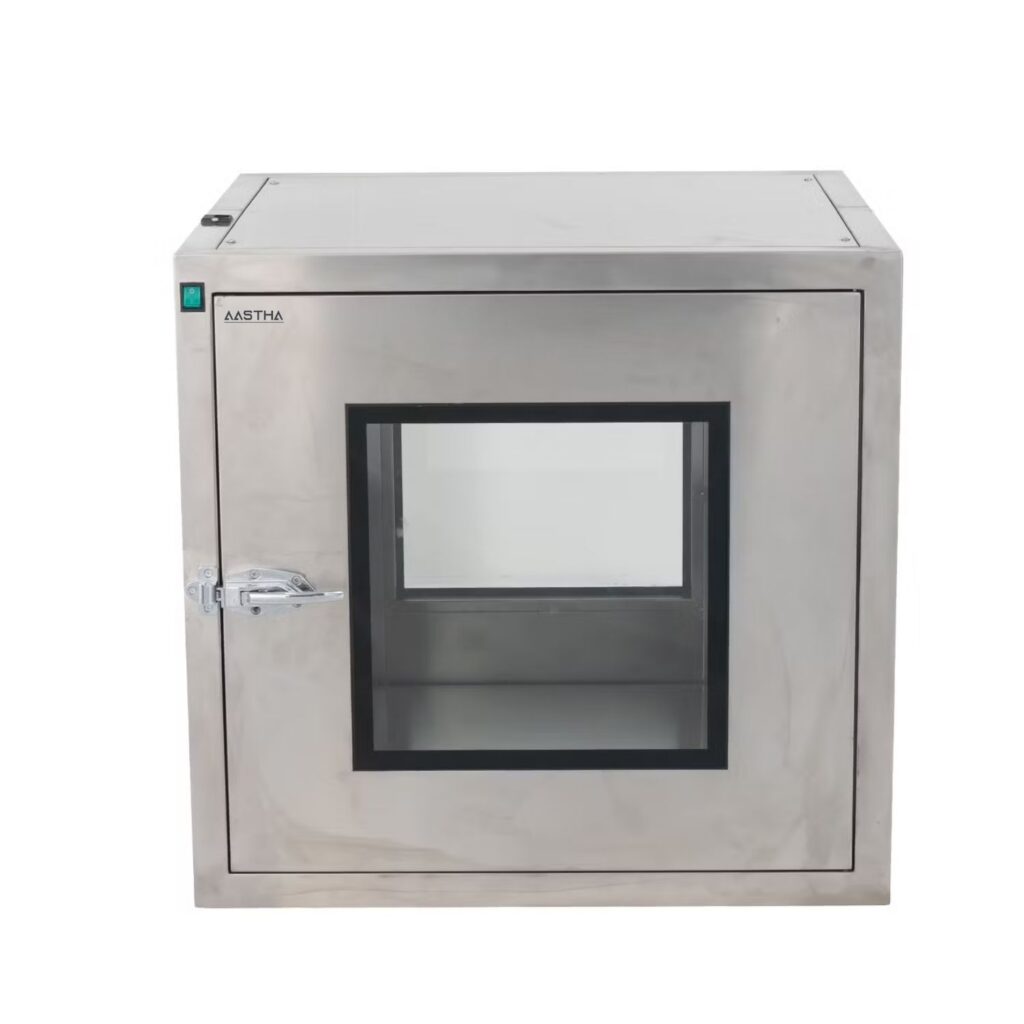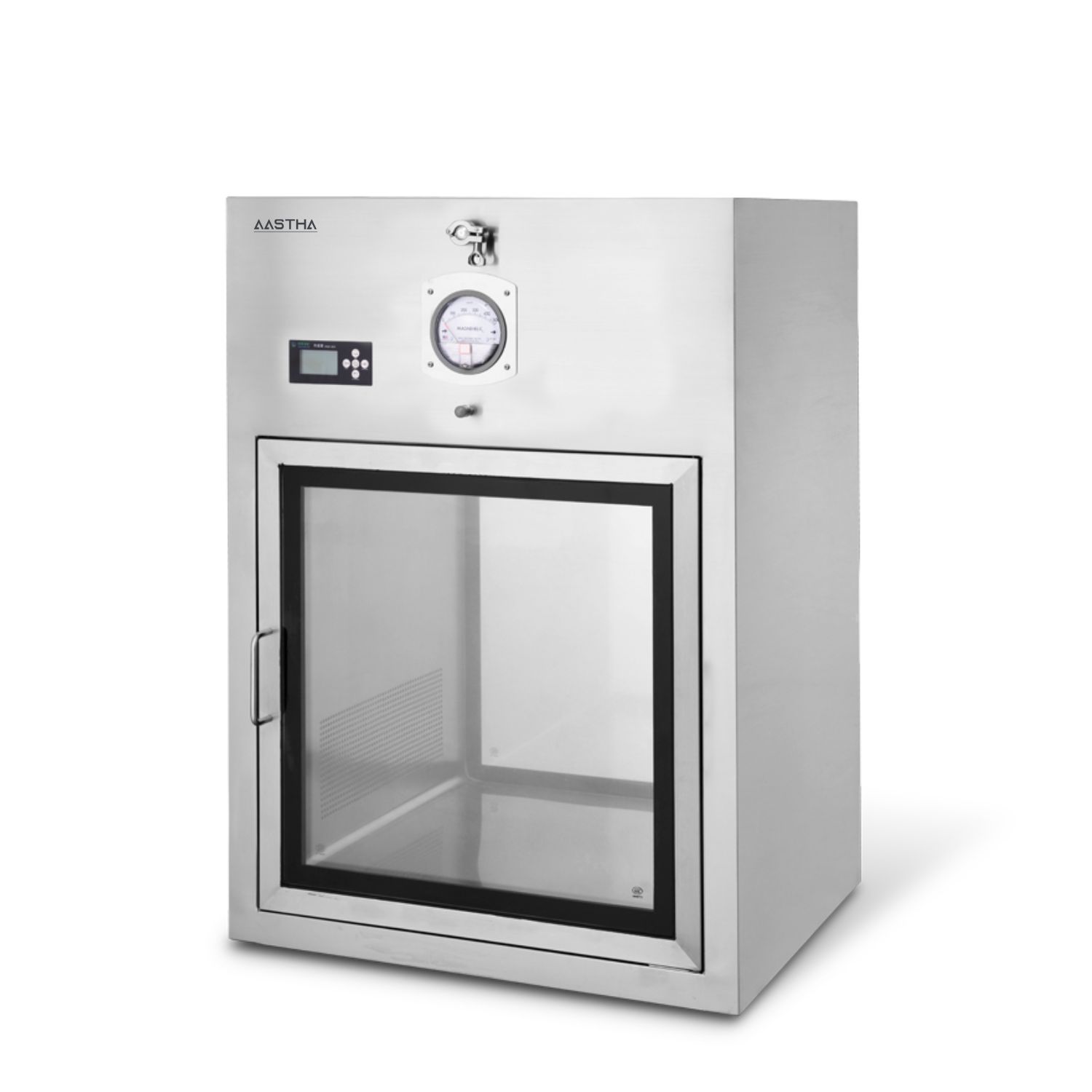Pass boxes are essential cleanroom equipment designed to transfer materials between controlled environments without introducing contamination. During the transfer process, any surface particles present on the material can be minimized or removed, ensuring product and process safety.
A key feature of a pass box is its interlocking door mechanism, which ensures that only one door can be opened at a time. This prevents cross-contamination and maintains the integrity of the cleanroom environment.
Pass boxes are widely used in microbiology laboratories, as well as the pharmaceutical, chemical, and food industries. They are also known by various names such as Cleanroom Pass-Through, Clean Transfer Window, and Transfer Hatch.
Depending on application requirements, pass boxes are available in two types:
- Static Pass Box – Used for material transfer between two areas of the same cleanliness level.
- Dynamic Pass Box – Equipped with HEPA/ULPA filters, used for transfer between areas of different cleanliness levels to ensure additional protection.
Static Pass Box
A Static Pass Box, also known as a Passive Pass Box, is installed between two cleanroom areas that share the same cleanliness classification. It does not have any air supply or air extraction system, making it a simple yet effective solution for contamination-free material transfer.
Key Feature
Specification
Dynamic Pass Box
A Dynamic Pass Box is designed to transfer materials between classified and unclassified areas in cleanroom environments. Unlike static units, it is equipped with HEPA-filtered vertical airflow that ensures particulate removal during transfer, thus maintaining the cleanliness and integrity of the controlled area.



